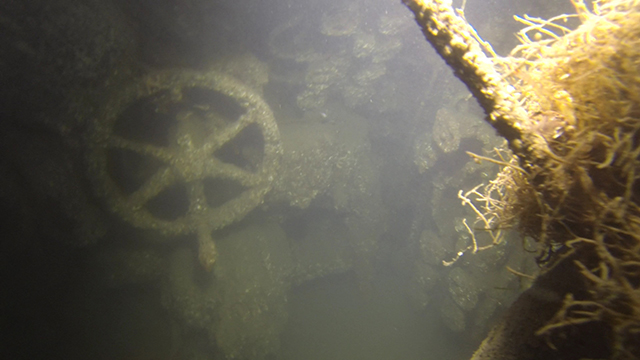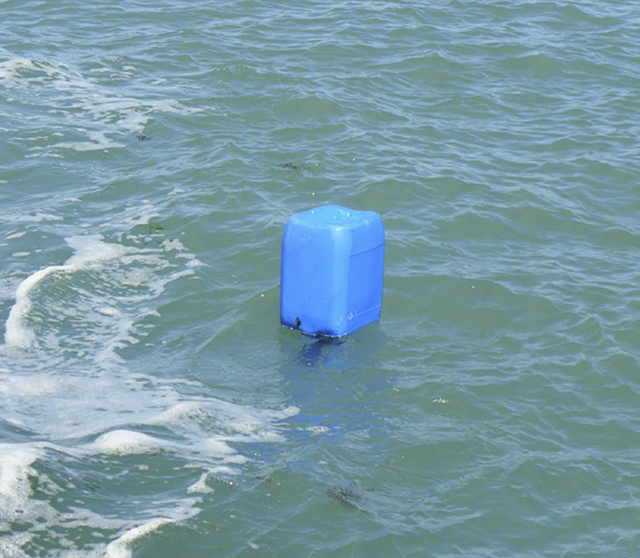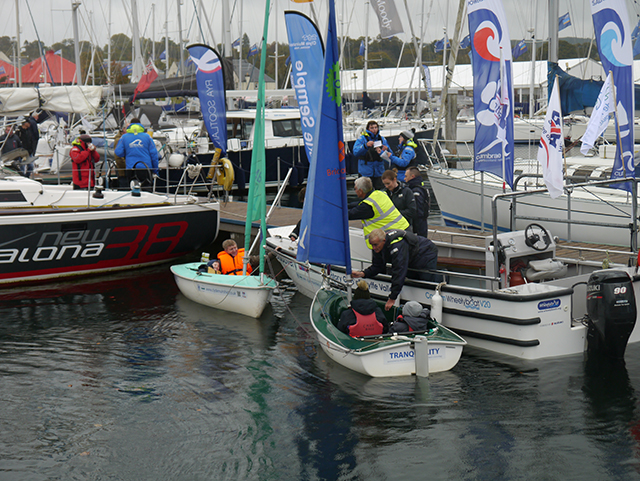The pinnace of the Royal Navy battleship, HMS Royal Oak, had lain undiscovered in Scapa Flow in the Orkney Islands for nearly 80 years
Archaeologists have discovered the missing port side pinnace of the Royal Navy battleship, HMS Royal Oak at Scapa Flow in Orkney.
The anchored warship was torpedoed in the early days of the Second World War by a German submarine.
The vessel was in Scapa Bay as an anti-aircraft platform to help defend a vital radar station on the cliffs.

The bow of HMS Royal Oak’s steam pinnace
834 men were lost of the 1,200 strong crew, with the few survivors struggling in the cold oil-covered water.
Documentary evidence reveals that around 100 crew members abandoned ship via her port side pinnace, which had a lifesaving capacity of 59.

The pinnace’s compass
The starboard side pinnace went down with HMS Royal Oak and can still be seen on the seabed a short distance from the wreck.
Survivors recall that the port side pinnace had not got up steam so boards were used to paddle the vessel away from the sinking HMS Royal Oak.
Continued below…
Two wrecks spanning almost 300 years of history granted protection
A shipwreck containing 15 cast iron English cannons off Chesil Beach, Dorset and a First World War U-boat off Whitby,…
Call for more reporting of fishing gear entanglement
The RYA says it has received only 85 reports since it launched its online fishing entanglement form and more is…
All aboard for Scotland’s Boat Show 2017
Scotland's Boat Show will once again this year provide visitors with the chance to get out on the water to…
The pinnace began to rock due to being overloaded and the chief buffer tried to counter the movement by shouting instructions ‘’Lean to starboard, lean to port’.
Some on deck were ordered below to make more room as more men tried to climb onboard.
Survivor Dick Kerr, who was hanging on the side of the small vessel, later said that he heard someone start singing ‘Down Mexico way, south of the border’’ and a few others joined in.

The prop of the pinnace
A short while later the pinnace capsized throwing those on deck into the cold waters of Scapa Flow and trapping those who had gone below.
Some crew scrambled onto the upturned hull but many were lost. The vessel then righted herself, capsized once more and then sank.

The boiler from the pinnace
The location of the boat was not known for decades until it was discovered by members of the Orkney Research Centre for Archaeology (ORCA), the University of the Highlands and Islands Archaeology Institute and SULA Diving.
Last month, the ship’s last resting place was pinpointed on multibeam sonar, 300 metres from the main wreck site at Scapa Flow.
The site was surveyed by Triscom Enterprise as part of the Shiptime Maritime Archaeology Project.
It had been previously side scanned by SULA Diving as part of a survey for the Orkney Harbour Authority, but the identity of the craft had not then been established.







